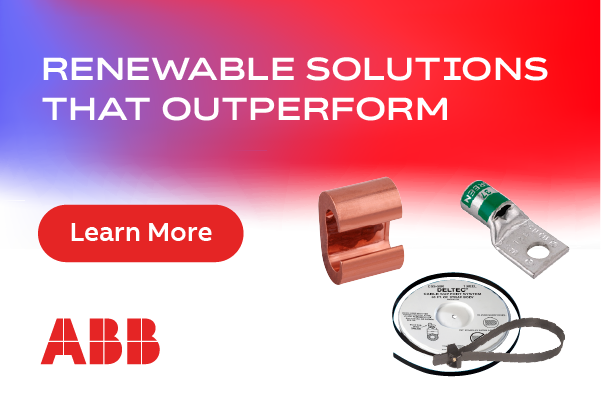Energy Storage in Paradise: "Buffering" island wind interconnection in Hawaii
Island nations typically have a high dependence on imported fuels to supply their electric generation portfolio. The State of Hawaii is no exception. Oil imports currently account for 90% of the state’s energy fuel source portfolio. Seeking to address the significant environmental and economic implications of imported fuel dependence, Hawaii has set some of the most aggressive state renewable energy targets in the country—40% renewables by 2030. The challenge is integrating a high-penetration of alternative energy, without sacrificing electric grid reliability, availability, and power quality.
The variable nature of renewable generation can lead to difficulty in maintaining electricity grid operations. This problem can become even more acute for island applications. As such, the Hawaiian utilities established a set of requirements that renewable energy project developers must meet to qualify for interconnection. Energy storage can be a core component to meeting interconnection requirements and creating the balance between harnessing variable energy resources—such as wind and solar power—while maintaining a stable, reliable, and robust grid.
Buffering challenges
Applying energy storage technologies to renewable resource applications helps to address the three “buffering” challenges posed particularly by wind and solar power: smoothing, capacity firming, and time-shifting.
Briefly, smoothing (or ramp control) is a storage function that helps reduce the adverse impacts of a very fast change in renewables’ generation level or output. Capacity firming is a storage function to help maintain the power output at a committed (or firm) level for a reasonable time. Time-shifting can be an essential storage function with renewable generation as these systems often supply energy during off-peak demand periods. The device can store energy during this period, and discharge back to the grid during peak periods.
In selecting a battery storage system, there are a number of key technical criteria deserving evaluation in performance and operation:
- Response time. A storage device with a response time of less than five seconds (<5 sec) is being utilized for smoothing applications. However, a high-power storage device with less than a two-second (<2 sec) response time would be more cost effective.
- Capacity. Capacity firming, like smoothing, requires a fast-response energy storage system, but requires more storage capacity to continue the discharge at the rated power when generation is down. To date, the energy storage technologies being used for such applications are fast-response, high-power devices with a discharge time of about one hour.
- Discharge Duration. Time-shifting applications are best served with high-energy devices with a discharge time of over one hour, but preferably three to five hours. Time shifting is not a requirement for renewable energy interconnection, but has always been considered a “natural” revenue-generating application for storage devices. For cases such as wind power, where wind farms often generate at night when there’s less load, the more energy that can be stored (long duration), the more advantages with the technology.
Case study
These energy storage wind application technical factors were among those evaluated for an Independent Power Producer (IPP) developing a wind farm on one of the Hawaiian Islands. Here is a summary of how the developer approached the storage system evaluation to meet the interconnection ramp rates and potential power fluctuation requirements stipulated in Hawaiian Electric Company’s (HECO) model power purchase agreement (PPA).
To address the interconnection needs for one island’s wind farm, the project developer examined the potential of integrating an advanced energy storage device that could offer performance characteristics that would allow the wind farm to meet the PPA. The developer selected an advanced storage system that best suited the wind farm’s application needs. As these devices are just now being introduced into the field, the developer took the step of contracting with an independent third party to confirm its evaluation of the technology, the system’s performance, and its operation.
The third-party confirmation of the technology analysis and validation of the system performance was a critical step on the path forward to commissioning and operation of the wind farm.
This battery system analysis and validation process included:
1. Evaluating the technology selected for the application;
2. Assessing the control algorithm that was utilized to ensure the wind farm and battery were operating properly;
3. Confirming the selected size (MW) of the application;
4. Reviewing the factory acceptance test documents; and
5. Observing the actual testing at the battery manufacturer’s site. The preparation provided the basis for a successful introduction of the unit into the field.
With the support of the independent battery system analysis and validation findings, the wind developer was able to meet HECO’s requirements for grid connection. By confirming the appropriate battery size, the third-party evaluation helped the wind developer maximize wind energy storage capacity for the wind farm and minimize the costs of operating system; thereby, ensuring energy production from this renewable resource.
The result: the project developer has been successfully operating their 30 MW wind farm after commissioning the project in early 2011. The project will contribute to the State of Hawaii’s Clean Energy Initiative, which aims to achieve a 40% clean, renewable portfolio by 2030. The project is one step along the way to decreasing Hawaii’s dependency on fossil fuels and reducing greenhouse gas emissions.
Kristen Brewitt is the senior consultant for KEMA, and Rick Fioravanti is VP of KEMA’s Storage Applications & Support
KEMA
www.kema.com
Author: Kristen Brewitt & Rick Fioravanti
Volume: September/October 2011









